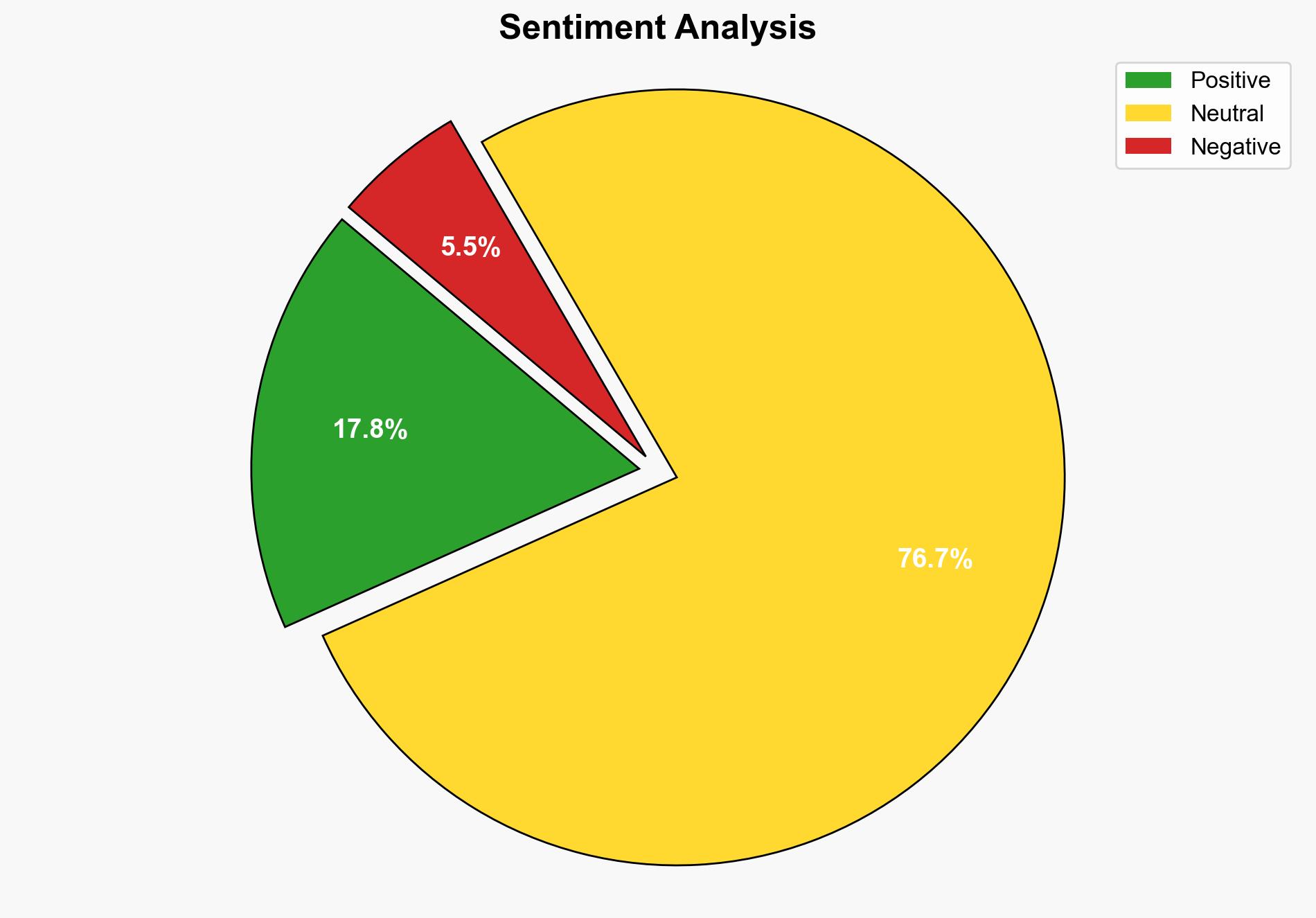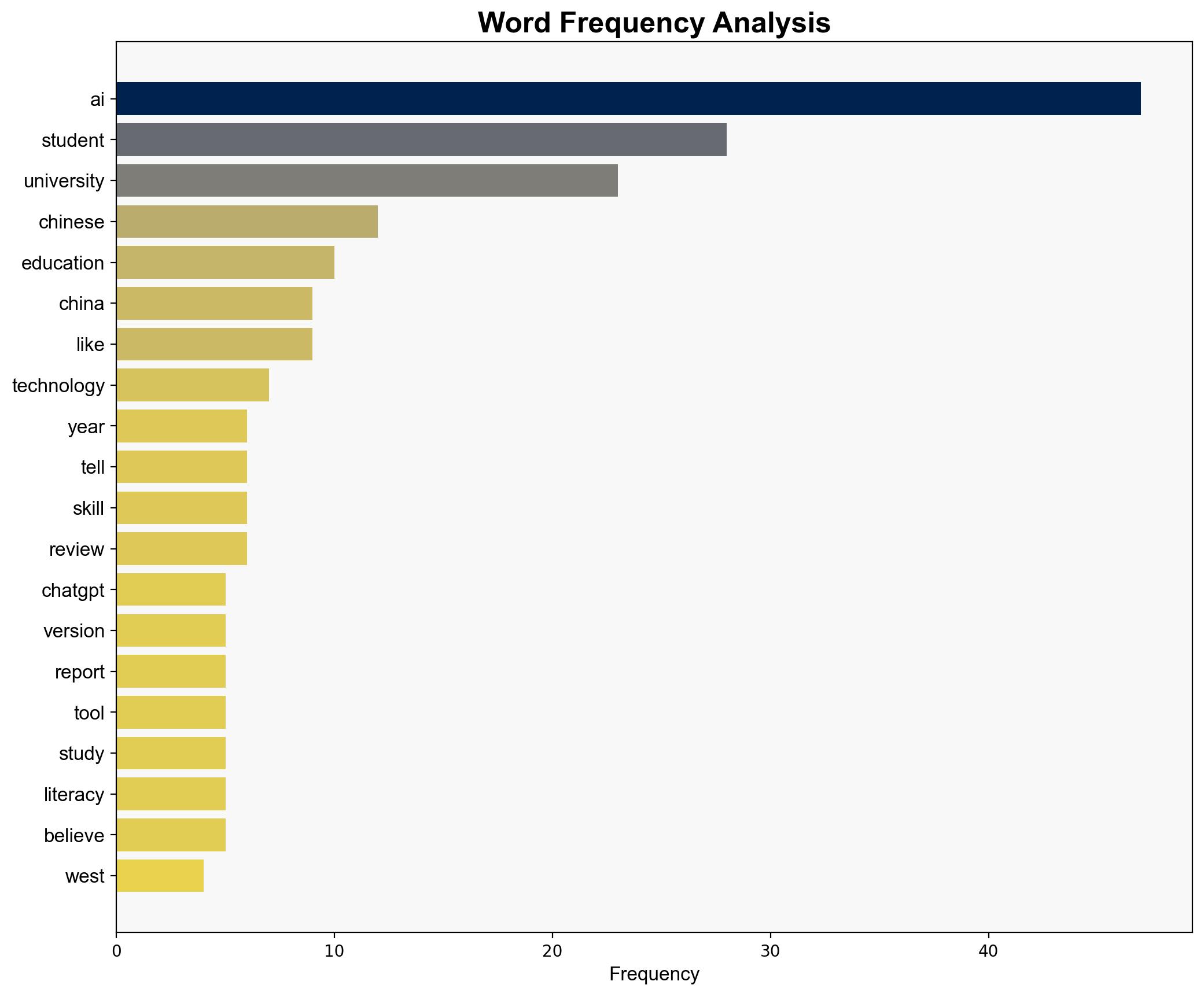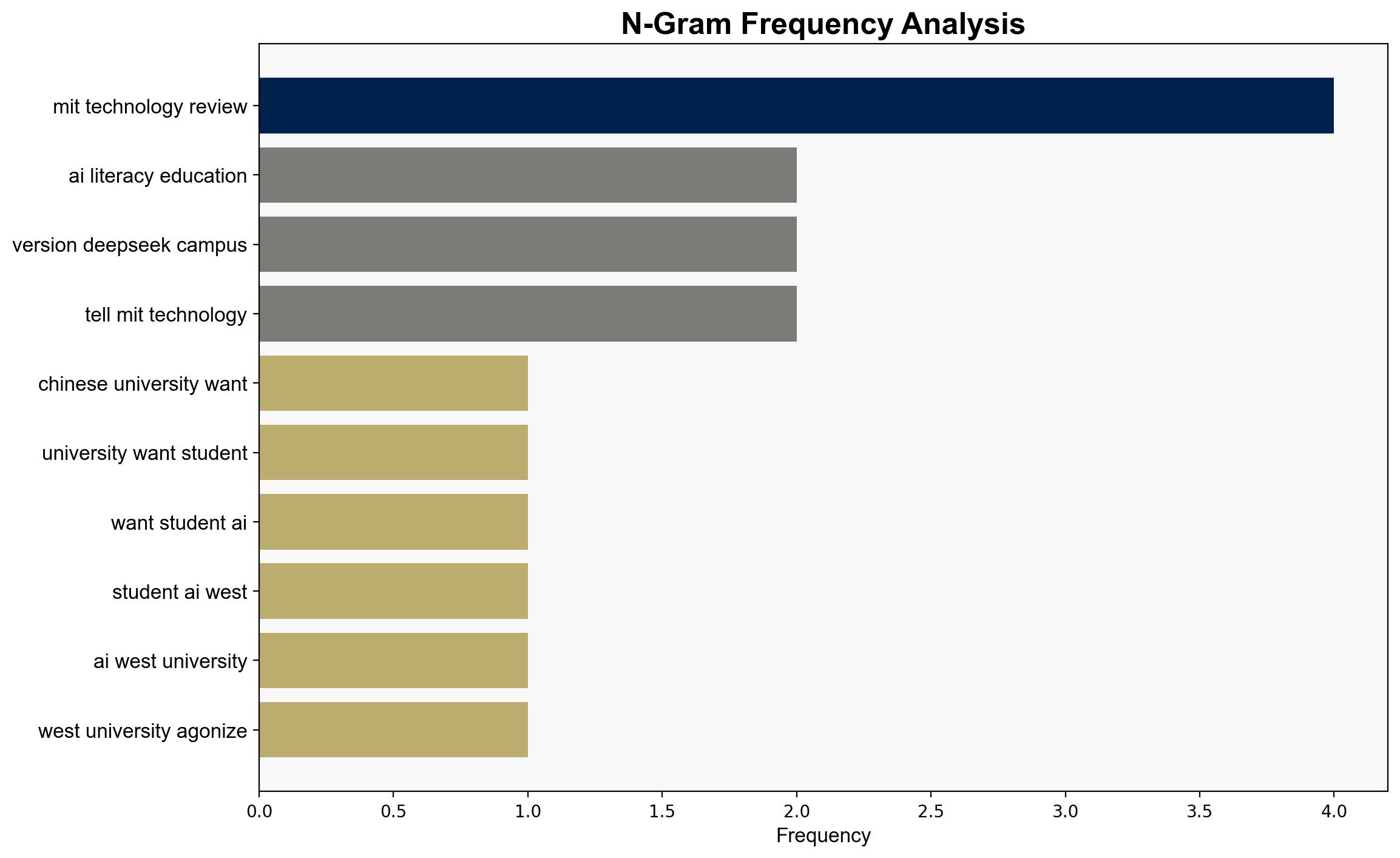Chinese universities want students to use more AI not less – MIT Technology Review
Published on: 2025-07-28
Intelligence Report: Chinese universities want students to use more AI not less – MIT Technology Review
1. BLUF (Bottom Line Up Front)
Chinese universities are actively integrating AI into their curricula, contrasting with Western institutions that are more cautious. The most supported hypothesis is that China aims to leverage AI as a strategic asset to enhance national progress and global competitiveness. Confidence Level: High. Recommended action: Monitor developments in Chinese AI education to assess potential impacts on global technological leadership and innovation.
2. Competing Hypotheses
1. **Hypothesis A**: Chinese universities are promoting AI to cultivate a technologically advanced workforce that aligns with national goals of technological leadership and economic growth.
2. **Hypothesis B**: The integration of AI in Chinese education is primarily a response to global trends and pressures, aiming to keep pace with international educational standards rather than leading them.
Using ACH 2.0, Hypothesis A is better supported due to explicit references to national pride and strategic initiatives, such as the Ministry of Education’s guidelines and the emphasis on AI as a driver of progress. Hypothesis B lacks strong evidence, as the narrative focuses more on proactive measures rather than reactive ones.
3. Key Assumptions and Red Flags
– **Assumptions**: It is assumed that the Chinese government and educational institutions are aligned in their objectives for AI integration. Another assumption is that the increased use of AI will not face significant resistance from students or faculty.
– **Red Flags**: Potential over-reliance on AI could lead to ethical concerns or skill gaps in critical thinking. The lack of detailed data on student and faculty reception of these changes is a blind spot.
4. Implications and Strategic Risks
The widespread adoption of AI in Chinese universities could result in a more technologically adept workforce, enhancing China’s competitive edge in global markets. This shift may also influence global educational standards and practices. However, the rapid integration of AI poses risks of dependency and ethical challenges, such as data privacy and academic integrity.
5. Recommendations and Outlook
- **Monitor**: Continuously track developments in AI education in China to anticipate shifts in global technological leadership.
- **Engage**: Collaborate with international educational bodies to establish ethical guidelines for AI use in academia.
- **Scenario Projections**:
– **Best Case**: China successfully integrates AI, leading to global advancements in technology and education.
– **Worst Case**: Ethical and dependency issues arise, causing international backlash and technological isolation.
– **Most Likely**: China enhances its technological capabilities, influencing global educational practices and standards.
6. Key Individuals and Entities
– Lorraine, a law student, provides anecdotal evidence of AI use.
– Fang Kecheng, a professor at Chinese University of Hong Kong, highlights cultural attitudes towards technology.
– Liu Bingyu, a professor at China University of Political Science and Law, advocates for responsible AI use.
– Lin Shangxin, principal of Renmin University, emphasizes AI’s potential in humanities.
7. Thematic Tags
national security threats, cybersecurity, technological leadership, educational reform, AI ethics





